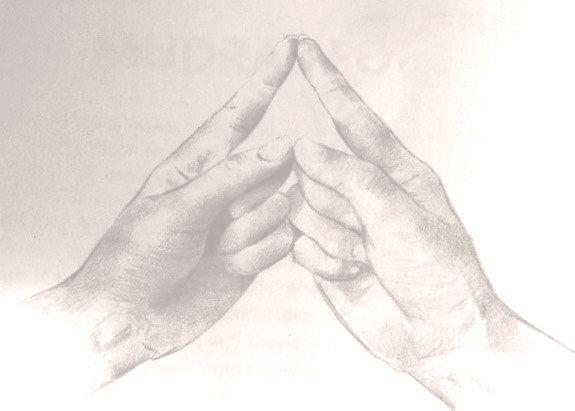The marvelous world of mudras is a mysterious one at first glance. Yet with a bit of guidance and information, the mystery is unraveled and their powerful gifts for health and healing become clear.
Mudra (/muˈdrɑː/ [listen]; Sanskrit: मुद्रा, IAST: mudra) is defined as a "seal," "mark," or “gesture" and originated in India. It is used in the ritual of yoga, uniting body, mind, and spirit. This article references the mudras created with one or both hands, yet there are mudras that involve the whole body (asana).
Let’s see how mudras work and how they can open a path for personal healing. It is my intent that yoga instructors become aware of how mudras support the teachings of yoga asana and meditation.
To begin, it may help to think of a mudra as a recipe, and as with all recipes, there are ingredients, instructions, and outcomes. The ingredients are elements of matter: earth, water, fire, air, and space. Just as the natural elements are present in mudras, so are the physical elements present in our bodies. For example, earth expresses as bones, muscles, tissues, and organs; water expresses as blood, tears, urine, synovial fluid, and lymphatic fluid; fire is your temperature of 98.6ish, which fuels the process of metabolism; air is the breath; and space … well, it is there in your cells, your joints, and hopefully, on occasion, between your thoughts.
Additionally, there is the ingredient of prana, delivered to us through breath as expression and movement of the life force. This movement is known as the prana vayus. Prana’s movement reflects the five directions: north, south, east, west, and center.
In any recipe, once you have the ingredients, you must follow the directions, usually in a sequence and with specific times needed to produce the desired outcome. These aspects are as important as the ingredients themselves. Anyone who has attempted to bake a cake from scratch knows that just having the ingredients, even organic ones, doesn’t guarantee that what comes out of the oven will be light, fluffy, and moist. So too with mudras.
An example: Let’s imagine that you’d like to learn a mudra that could help you digest information, food, and emotion and calm your nervous system at the same time. While that is a tall order, there is a mudra that delivers those outcomes.

Achala Agni Mudra: the gesture of steady fire for optimal digestion
Source: Joseph and Lilian Le Page
Let’s first look at the ingredients. The natural elements, discussed earlier, need to express in such a way that the fire element is not too high and not too low. Therefore, in order for this to happen, the air and earth elements need to supply the fire with steady and reliable fuel. Water also needs to be on hand to balance this dynamic. Plus, there needs to be space for all this to take place. The Achala Agni Mudra does just that.
Then there are the instructions: How does the prana need to flow to deliver and support an effective and safe fire?
In this mudra, the hands, fingers, spine, and breath work in unison and focus fire, the great metabolizer, providing heat for transformation and purification. It may sound too good and too easy, and yet I am confident that with skillful use and respect, anyone can learn this mudra and produce this outcome.
So how does this mudra also soothe the nervous system? Well, it’s all in the prana. A safe, effective fire is one that is contained and centered in a designated place, for example, a fire pit or oven. In the human body, fire’s locale is the center of the body, between the rib cage and pelvis. Its heat metabolizes food, its warmth is circulated through the blood, and its light glows upward to the eyes and brain, producing discernment and clarity. Think of it this way: If the elements are not in balance—the air (wind) moves too fast and is undirected (air pushing fire around) and water is deficient causing dryness—then our bodies would align with a fire gone rogue. (Millions of acres and thousands of people are living the devastation of fire uncontrolled.) Yet when fire is contained, we are mesmerized by it and we gather around and relax and settle. Our nervous systems are calmed.
Mudras are powerful tools for health and healing. While this article hopefully provides a light introduction, mudras require respect. They are not picked up willy-nilly and applied on the run.
For more about this mudra and several other mudras that can support a life that is responsive, compassionate, and purposeful, please join me for my YTA workshop on November 14.